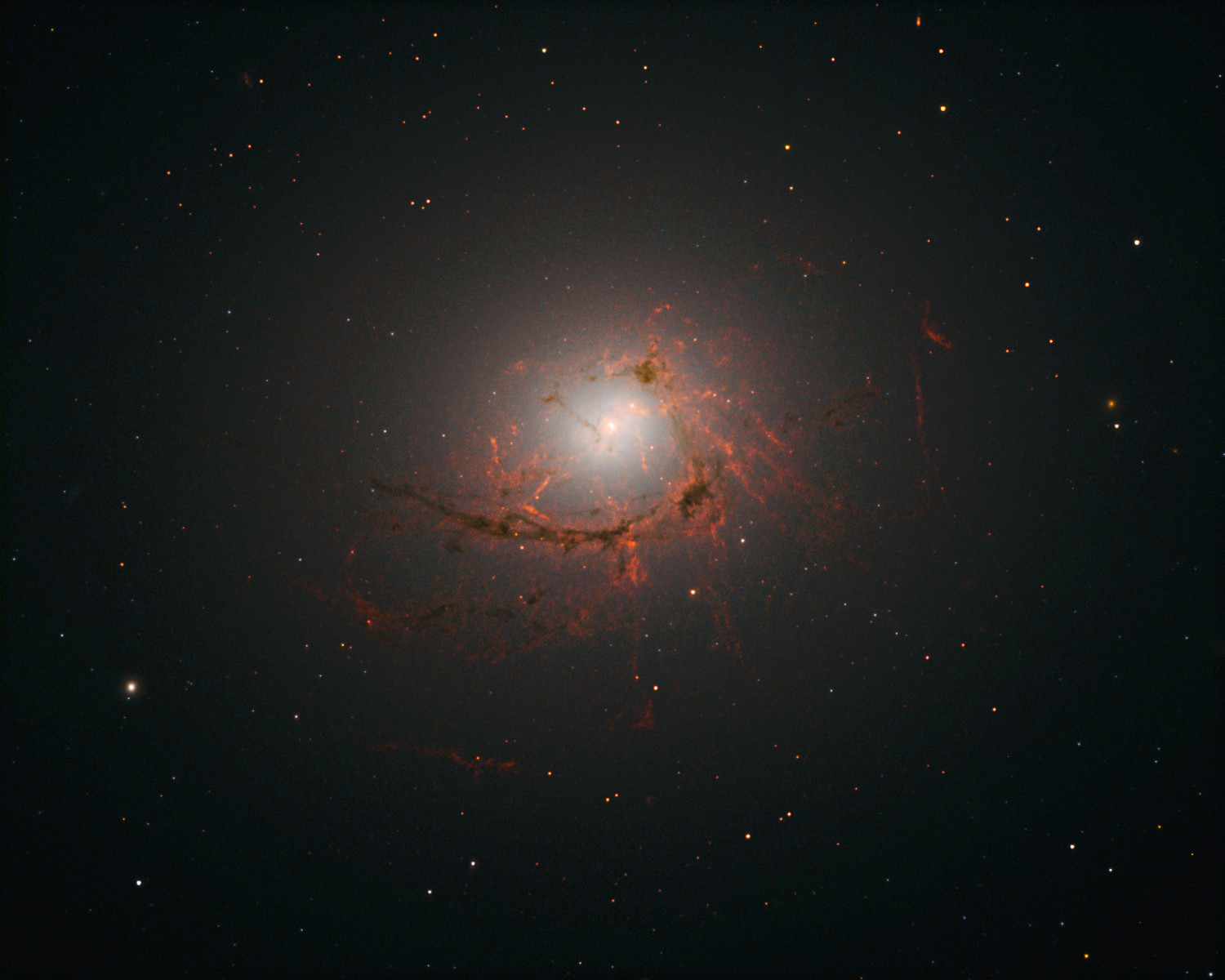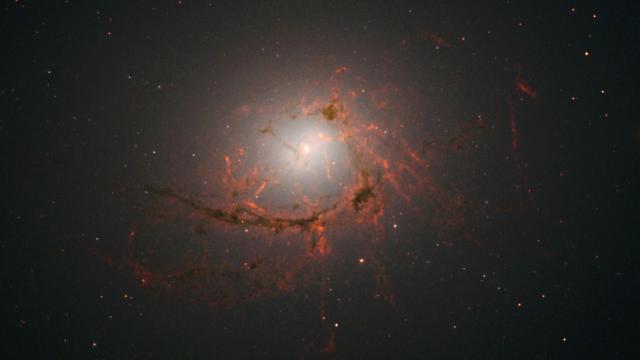A stunning new image captured by the Hubble Space Telescope shows a galaxy that’s being strangled by tentacles of gas and dust. The strange and intricate shape of this celestial object is caused by a supermassive black hole at its core — and it’s killing the host.
Image: NASA, ESA/Hubble, A. Fabian
This remarkable galaxy, called NGC 4696, is located within the Centaurus galaxy cluster some 150 million light years away. It has a fairly standard elliptical shape, but a closer look shows it’s not quite like its neighbours.
NGC 4696 features spectacular bands of curling filaments, made from dust and ionised hydrogen, that are spiralling out from the main body and into interstellar space. New research suggests a supermassive black hole at the galaxy’s core is responsible for these features — and it’s also preventing the galaxy from creating new stars. This galaxy is basically dead.

Astronomers have known about this “question mark” galaxy for quite some time — it’s the brightest member of its cluster — but a survey conducted by University of Cambridge astronomers is offering new insights into NGC 4696’s thread-like filaments and how they’re produced. Using the Hubble Space Telescope, the astronomers were able to measure the dusty filaments, finding that they average about 200 light years across, and feature a density about 10 times greater than the surrounding gas. These filaments are binding and knitting together like thread, connecting the galaxy’s gas to its bright core.

A Hubble image taken in 2010 offers a different perspective of NGC 4696. Image: ESA/Hubble and NASA
The researchers say a supermassive black hole at the galactic core is responsible for the shape and positioning of these filaments. Energy produced by the churning black hole is heating nearby gas, sending streams of super-hot material outwards and dragging the filamentary material — and even the galaxy’s magnetic field — along with it. Filaments near the black hole are eventually gobbled up.
While it’s all very beautiful, these processes may explain why the galaxy appears stunted. The magnetic structures flowing throughout the galaxy are preventing any gas from creating new stars. With no new stars being born, its existing crop of stars will continue to age and eventually die, causing this sector of space to wink out for all time.
[Hubble]
